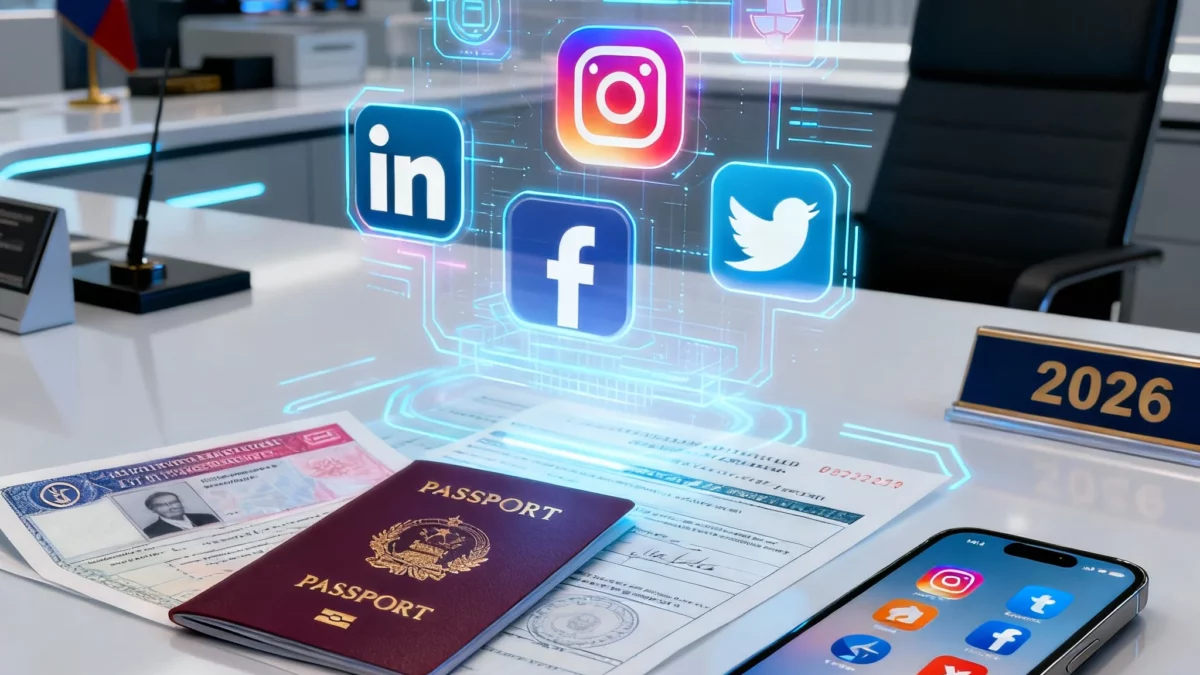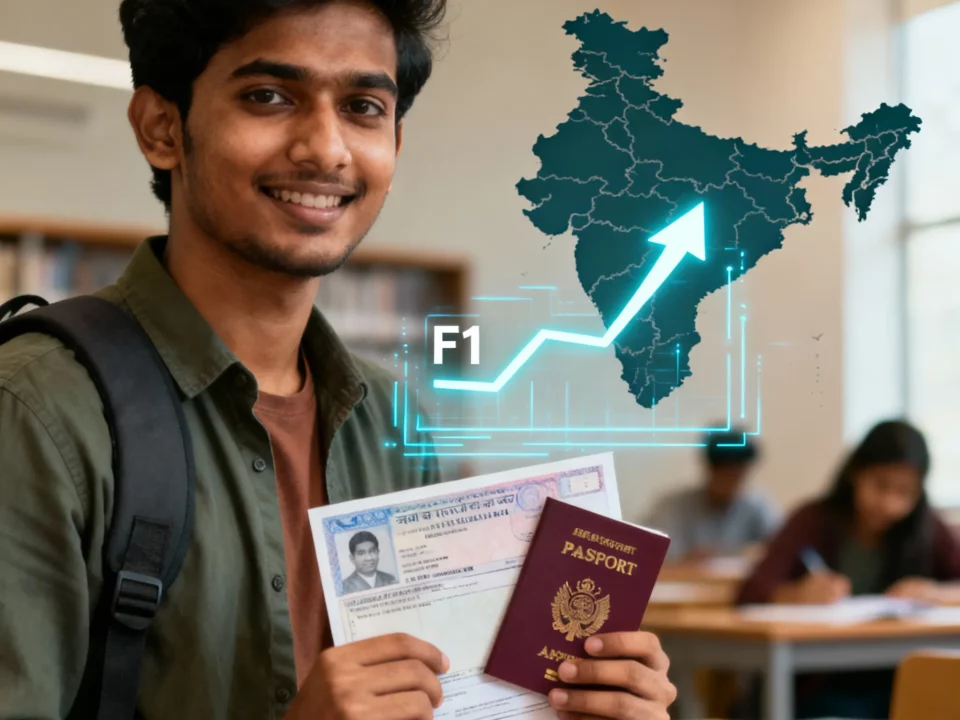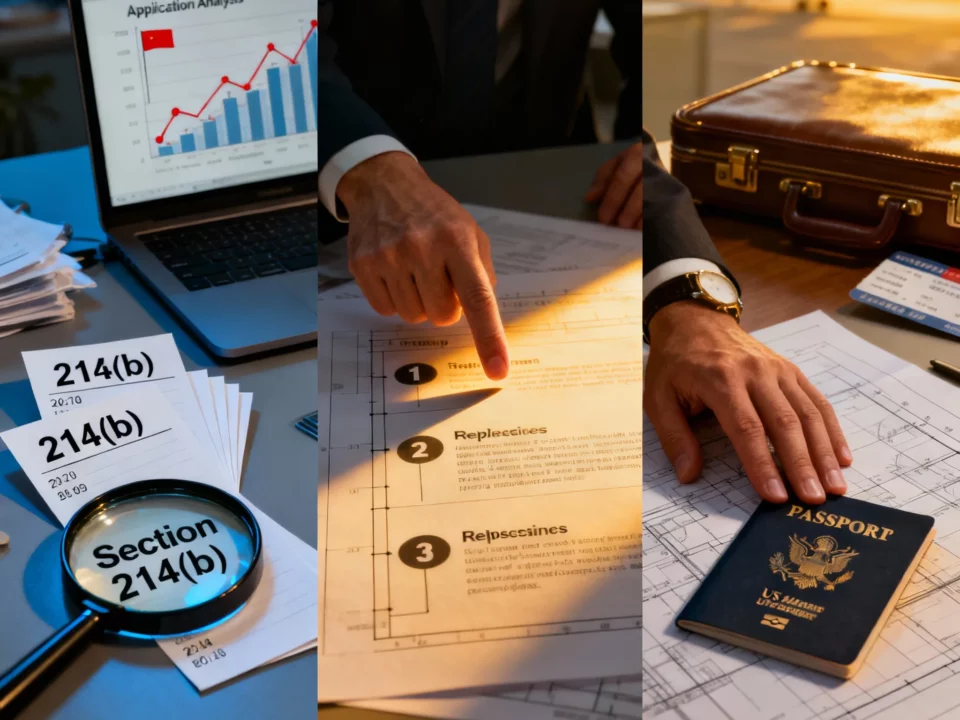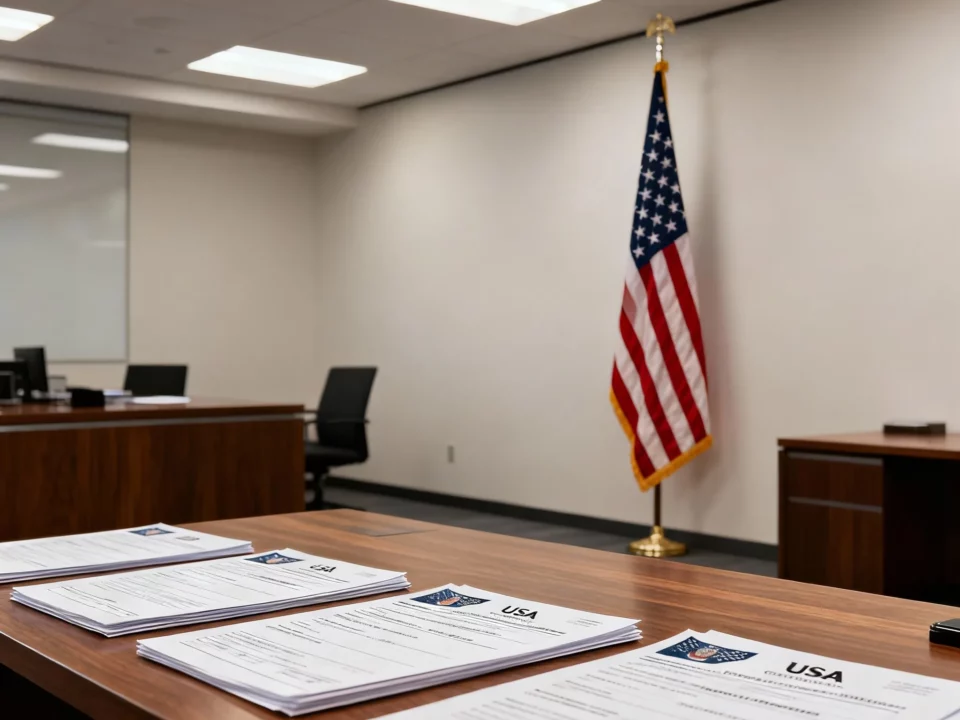214B Social Media Vetting Complete F1 Visa Guide 2026

Estimated reading time: 6 minutes
In the one year since 214b social media vetting became mandatory (June 2025), refusals linked to digital footprints have surged by 23%. As we move into the 2026 admission cycle, this requirement is no longer “new.” Instead, it’s become a permanent, data‑driven part of every F1 visa assessment.
At Bluehawks EduAbroad, our former consular officers have audited hundreds of applicant profiles. Consequently, we now treat digital preparedness as important as financial documentation or interview coaching.
Today, we share the complete 214b social media vetting 2026 guide. From retrospective insights to forward‑looking action steps, you’ll discover how to enter the new cycle confident, consistent, and compliant.
Table of contents
- What 214B Social Media Vetting Actually Means in 2026
- The Five‑Year Digital Footprint Audit (for 2026 Applicants)
- Platform‑Specific 214B Social Media Vetting Tactics 2026
- Content Patterns Triggering 214B Flags in 2026
- The 2026 Strategic Digital Identity Transformation Timeline
- Advanced Former‑Officer Recommendations for 2026 Applicants
- Common 214B Social Media Vetting Mistakes to Avoid 2026
- Your Bluehawks EduAbroad Digital Vetting Service for 2026
- Why Bluehawks EduAbroad Leads 214B Social Media Vetting in 2026
What 214B Social Media Vetting Actually Means in 2026
When the rule launched in mid‑2025, applicants had to list every handle used within the previous five years. However, many assumed disclosure was the only step. In reality, by 2026, officers are going far beyond simple collection.
What Officers Examine Today
Rather than just reviewing posts, they now analyze comprehensive behavioral patterns:
- Professional goals shown online vs. declared academic intent
- Lifestyle posts contradicting claimed finances
- Career networking implying U.S. job‑seeking intent
- Relationships or communities revealing different migration goals
- Timeline of digital activity and behavioral patterns
Moreover, average review times have grown from 15 to 25 minutes per case. Additionally, advanced tools now highlight inconsistencies between your online footprint and DS‑160 responses.
2025 data snapshot: Of all F1 refusals citing 214(b), approximately 18% mentioned digital inconsistency as a contributing factor.
The Five‑Year Digital Footprint Audit (for 2026 Applicants)
Because officers analyze behavior patterns rather than just individual posts, your complete timeline matters significantly. Therefore, our former‑officer audit process follows three strategic phases. Ideally, you should start at least 8 months before your 2026 interview.
Phase 1 — Inventory and Disclosure (Oct – Nov 2025)
First, list every account used since 2021—whether active, dormant, or forgotten. Next, include LinkedIn, Instagram, Facebook, Twitter (X), YouTube, Reddit, old forums, and gaming or dating platforms with social features. Importantly, un‑disclosed accounts discovered later create immediate integrity flags.
Phase 2 — Content Categorization (Dec 2025 – Jan 2026)
Once you’ve completed your inventory, systematically categorize all content:
High Risk: Job‑hunt activity, U.S. employment discussions, immigration forum threads
Medium Risk: Excessive travel posts, financial lifestyle content, mismatched educational themes
Low Risk: Neutral family updates, cultural activities, academic discussions – retain these, don’t delete
Phase 3 — Connection & Community Review (Feb 2026)
Finally, audit your contacts and memberships carefully. This includes alumni pages, U.S. job‑seeking groups, and overseas forums. Notably, officers now map “digital ecosystems” rather than evaluating individuals in isolation.
Platform‑Specific 214B Social Media Vetting Tactics 2026
LinkedIn – Your Highest‑Impact Platform
LinkedIn receives the most scrutiny during 214b social media vetting because it directly reveals professional intentions. Therefore, take these strategic steps:
- First, remove any “Open to Work in U.S.” tags immediately
- Second, adjust your headline to reflect student aspirations clearly
- Additionally, engage actively with India‑focused industry posts
- Finally, consider archiving U.S. recruiter connections if irrelevant
2025 case example: A Hyderabad engineer’s “exploring Bay Area opportunities” post led to refusal despite having flawless financial documentation.
Instagram – Lifestyle and Financial Alignment
Your Instagram content often reveals lifestyle realities that may contradict visa documentation. Consequently, follow these guidelines:
- Archive posts showing luxury spending and excessive international travel
- Ensure caption tone consistently matches your declared financial capacity
- Instead, prefer content featuring family activities, academic pursuits, or community involvement
- Furthermore, make your account private well before applying (not at the last minute)
Facebook – Your Historical Ledger
Facebook’s timeline feature provides officers with a comprehensive chronological view. As a result, you must:
- Verify that life events (education, employment) match your DS‑160 exactly
- Subsequently, clean old group activity and review tagged photos carefully
- Moreover, examine your comment history for tone and professionalism
Twitter / X – Opinions Matter
Although not always heavily scrutinized, Twitter content can reveal concerning opinions. Therefore:
- Delete any immigration rants or political speculation immediately
- Similarly, avoid tweets about “moving to U.S.” or permanent residence
- Instead, maintain neutral, industry‑related engagement
YouTube – Passive Signals
While seemingly passive, your YouTube activity reveals genuine interests. Hence:
- Scan subscriptions and comments to ensure academic consistency
- Additionally, unlist personal uploads unrelated to your studies
Content Patterns Triggering 214B Flags in 2026
Based on our analysis of 2025 refusal patterns, officers now flag these specific categories:
- Career Contradictions – U.S. job search activity visible across platforms
- Financial Inconsistencies – Lavish lifestyle posts contradicting affidavit claims
- Family Tie Gaps – Relationship statuses that undermine home‑country commitments
- Field Mismatch – Digital interests not aligned with your chosen academic program
- Immigration Intent Cues – Posts discussing “settling in America” permanently
Importantly, each of these falls under behavioral patterns that officers flag using updated 2026 algorithms.
The 2026 Strategic Digital Identity Transformation Timeline
To ensure optimal preparation, follow this strategic timeline:
| Timeline | Strategic Actions |
|---|---|
| Oct – Nov 2025 | Initially, inventory all accounts, back‑up content systematically, then start gradual cleanup |
| Dec 2025 – Jan 2026 | Subsequently, refine bios & headlines, remove high‑risk posts, and update privacy settings |
| Feb – Apr 2026 | Meanwhile, create India‑centric professional content consistently on LinkedIn |
| May – Jun 2026 | Additionally, network with returning alumni and document career progress |
| Jul – Aug 2026 | Finally, conduct comprehensive cross‑platform consistency check before interview |
Advanced Former‑Officer Recommendations for 2026 Applicants
Drawing from our consular experience, we strongly recommend these approaches:
1. Avoid Last‑Minute Deletions – Sudden mass purges appear suspicious and suggest concealment attempts.
2. Use “Archive,” Not Erase – Natural account behavior is preferable to creating digital amnesia.
3. Balance Privacy and Visibility – Making accounts private months early is fine; however, doing so right before your visa interview raises red flags.
4. Pre‑write Explanations – Prepare thoughtful explanations for any old posts that may need additional context.
5. Think “Operational Transparency” – Officers consistently prefer authentic, established accounts over brand‑new profiles created for visa purposes.
Common 214B Social Media Vetting Mistakes to Avoid 2026
Based on 2025 refusal patterns, avoid these critical errors:
❌ Ignoring old accounts from pre‑2022 platforms
❌ Posting publicly about visa preparation or previous refusals
❌ Joining U.S. immigration or H‑1B discussion forums
❌ Using AI‑generated bios with generic keywords like “Global Citizen”
❌ Making mass privacy changes during the same week as your interview
Instead, follow these successful strategies:
✅ Start your cleanup process 6–8 months early
✅ Consistently curate positive, India‑focused content
✅ Remain authentic when discussing social media during your interview
Your Bluehawks EduAbroad Digital Vetting Service for 2026
Since social‑media evaluation has now become central to 214(b) decisions, Bluehawks EduAbroad offers the only former‑officer‑led program specifically designed around real consular review protocols.
Comprehensive Service Highlights
Our program includes:
- Complete 5‑year multi‑platform risk audit
- Detailed content, connection & timeline mapping
- Personalized privacy and cleanup strategy tailored to your profile
- Intensive interview practice on digital‑presence questions
- Strategic post‑approval digital maintenance plan
Book Your 2026 Digital Audit: Contact Bluehawks EduAbroad and mention “Social Media Vetting 2026” to begin your comprehensive preparation.
Why Bluehawks EduAbroad Leads 214B Social Media Vetting in 2026
Our team of former U.S. consular officers witnessed firsthand the evolution of this process from optional checks to algorithm‑driven vetting. Consequently, we merge authentic consular insight with digital analytics expertise to help you present a consistent, credible, and approval‑ready online identity.
Ready to confidently approach your 2026 interview season?
Transform your digital presence into compelling proof of credibility with Bluehawks EduAbroad’s expert guidance.
💬 Chat with our 24/7 chat support team, just tap on that WhatsApp button on the right bottom of your screen 👉



